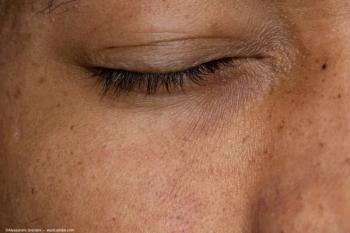
Q&A: Tarek Hassan, MD, on a new retinotomy technique
Key Takeaways
- Serial relaxing retinotomies offer a new approach to PVR management, minimizing retinal excision compared to traditional large retinectomies.
- The technique involves small, well-placed retinotomies to relieve traction, preserving more retinal tissue and achieving successful anatomical outcomes.
Tarek S. Hassan, MD, a professor of ophthalmology at Oakland University, presents a groundbreaking approach to managing proliferative vitreoretinopathy (PVR) through serial relaxing retinotomies.
He shared these insights with the Ophthalmology Times team on site at the Retina World Congress 2025 meeting, which was held in Fort Lauderdale, Florida from May 8-11, 2025.
Note: The following conversation has been lightly edited for clarity.
Ophthalmology Times: You are presenting on a new approach to managing PVR at this meeting. Can you explain this process and how it differs from the more standard approach?
Tarek S. Hassan, MD: Here at the Retina World Congress, I was given the opportunity to present a series of patients and a concept that we've been working on using serial, relaxing retinotomies in the management of PVR; rather than using a more traditional approach of a circle, linear retinectomy, where we remove several clock hours of retina, make large cuts in the retina.
Historically, we've thought of relieving tangential traction in cases of PVR as something we have to cut a lot of retina to achieve. And the problem is, our assumption has been that the intrinsic retinal scarring–or foreshortening–that occurs creates lines of traction that go from the periphery to the optic nerve or to attached retina somewhere posteriorly. But in fact, intraretinal scarring, which begins as early as 1 day after retinal detachment, and gets sequentially worse. That intraretinal scarring is fibroblastic glial tissue that proliferates in all directions within the retina, so there are no lines of traction that specifically go from the periphery to the nerve.
So rather than making large circum-linear retinectomies, we've been exploring the idea that if, after you've relieved all epiretinal fibrous tissue cause traction through membrane peeling and any sub retinal proliferation through peeling, then now you're left with the retina that is still foreshortened because of the intrinsic scarring. Typically, people would make a retinectomy of at least several clock hours, then cut the anterior retina, and then flatten the retina and laser. You're left with a large separation of bare RPE, rather than doing so if there is no further anterior traction–or epiretinal traction–with just foreshortening, we make regularly spaced small retinotomies the size of a soft tip that then relieve the traction, very, very well placed, circular retina retinotomies that relieve traction 360 degrees from the small retinotomy.
And as we all know, we do these types of surgeries, when you flatten a retina that has a retinotomy, that retinotomy enlarges significantly, indicating how traction is relieved in a circular fashion, 360 degrees around the retinatomy. So if you had a detachment, say, a chronic detachment, with intrinsic retinal foreshorting inferiorly, you could make 3 or 4 well placed retinotomies, leaving the anterior retina intact, flatten the retina under air, rather than perfluorocarbon and laser. The retinotomies laser in a more scatter pattern, anteriorly without cutting an edge and flatten the retina.
OT: How has this approach been shown to benefit patients?
Hassan: So we've done in the last year or so, multiple cases like that, and fortunately, knock on wood for now, they have all worked with a single operation with no recurrent PVR. But importantly, no hypotony, faster recovery, because patients have been flattened under air without residual pressure, we've left no long retinectomy edge that can curl over and re-detach and serve as a nidus for more stretch breaks.
In total, if you took, for example, a 6 clock hour retinectomy that a lot of people have traditionally made, versus 4 tiny little retinotomy holes that are made the size of a soft tip, you can achieve the same anatomic goal by removing maybe 1/50 or 1/100 the surface area of retina, so you excised so much less to achieve the same anatomical goals. And when we're talking about stimulating recurrent PBR beyond that operation, certainly cutting less is more when we're trying to achieve the best anatomic outcome.
Newsletter
Don’t miss out—get Ophthalmology Times updates on the latest clinical advancements and expert interviews, straight to your inbox.


















































.png)


